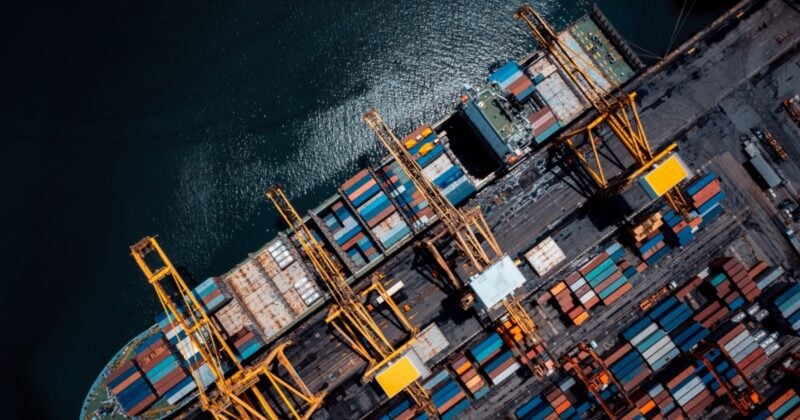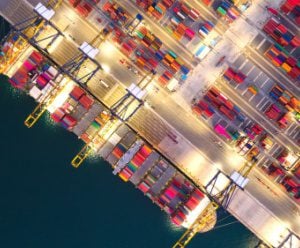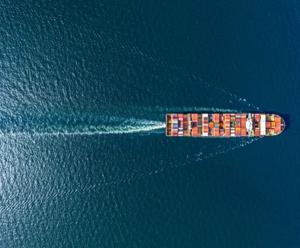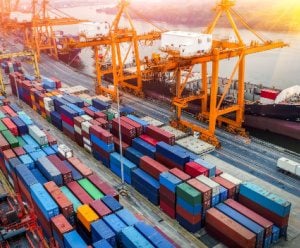
In a world of flux, what counts as normal container shipping?

After months of volatility, are we finally seeing a new trading world order start to emerge from the chaos of 2025? Perhaps.
President Donald Trump’s so-called ‘reciprocal tariff’ regime began to take clearer shape in August. The U.S. now has bilateral trade frameworks with economies representing around 60 percent of global gross domestic product.
This evolving trading deck sits under a rigging of sectoral tariffs, either already imposed or soon to be introduced, hitting industries as diverse as automotives, steel, semiconductors, pharmaceuticals, aircraft and trucks.
“The uncertainty of early 2025 is now becoming a new normal in trade and in container markets - at least in the short to medium term,” said Niki Frank, CEO of DHL Global Forwarding Asia Pacific. “Being flexible and nimble enough to adapt quickly will remain key in navigating sudden shifts.”
Tariff truce stabilizes transpacific flows - for now
“While uncertainty remains, the extension of the tariff truce has given some breathing room to shippers in Asia,” added Frank. “It allows for short-term planning stability, especially ahead of the holiday season.”
Some analysts believe the U.S. President could yet become even more aggressive on tariffs. India, where many beneficial cargo owners (BCO) have invested heavily as an alternative to China, is now facing possible stringent new tariffs due to the purchases of Russian oil. Should it come to pass, goods that were shipped out from India, even before the tariff was announced, might be subject to it when they arrive after the announcement.
Will the U.S. impose more tariffs on China, which is another major buyer of Russian oil? In both situations, any goods that were shipped after the announcement will be subject to the new tariffs. But as things stand, even with the uncertainty of further tariffs, the current situation could favour moving holiday goods out of China sooner rather than later.
“In the coming weeks, we might see an increase in demand as more shippers decide to drop the wait-and-see approach. With heavy front loading happening in the first half of 2025, the key question is how much cargo is left to be moved in the remaining months of 2025,” said Bjoern Schoon, Senior Vice President, Ocean Freight, DHL Global Forwarding Asia Pacific.
The Q3 peak season, which traditionally saw a spike in volume shipped from July onward, did not occur this year. Volumes are significantly lower than predicted, amid concerns about over-ordering and ending up with excess inventory. However, normal ordering might return in Q4 if worries about U.S. growth lift.
Spot rate declines have prompted most carriers to blank transpacific sailings, although the Gemini Cooperation has attempted to deploy smaller ships instead to maintain schedule promises.
The duality of Asia-Europe rates and volumes
Asia-Europe spot freight rates have also seen a downward trend, driven by capacity shifts and routing constraints. Yet, demand has remained strong, with container flows on the trade surging by around nine percent year-on-year in the first four months of 2025. Volumes from Asia to North Europe went up nearly seven percent and Asia-Mediterranean flows climbed over 12 percent.
Carriers have continued to move capacity on the Asia-Europe trade, even as the Suez Canal route is unlikely to open this year. These factors - combined with labour shortages, low river levels and strikes - have made port congestion a defining feature of 2025. For carriers and their customers, waiting times at key Asian and northern European hubs continue to be disruptive, according to recent data from Linerlytica.
Co-existence of volatility and resilience in global trade
Elsewhere, there are positive signs for trade and container markets. China’s July exports topped expectations, while one container executive said Chinese companies were continuing to win market share in world trade despite U.S. policy. Container charter rates also remain firm, even as spot rates decline and excess capacity looms. Fleet growth is also expected to outpace demand growth in the coming years.
So, what does the new normal look like for container shipping? While the White House is shaping a new tariff landscape, its impact on trade has mostly added another layer of short-term turbulence to a long-term trend.
Disruption in container shipping is nothing new. Sea-Intelligence reports that weekly liner service capacity has become drastically more volatile and unpredictable since the pandemic. The effect has been most severe on the Asia-Europe trade, where average volatility has more than doubled to nearly 30 percent. The Asia-Mediterranean trade shows a similar rise, while Asia-North America routes have also seen volatility climb from around 20 percent to 30 percent.
“In the new normal, volatility is the only constant. This higher volatility in weekly capacity has fundamentally changed how we operate,” noted Schoon. “For customers, it means adapting procurement and shipping schedules to a market where agility is the new competitive advantage.”
ALSO WORTH READING











 English
English